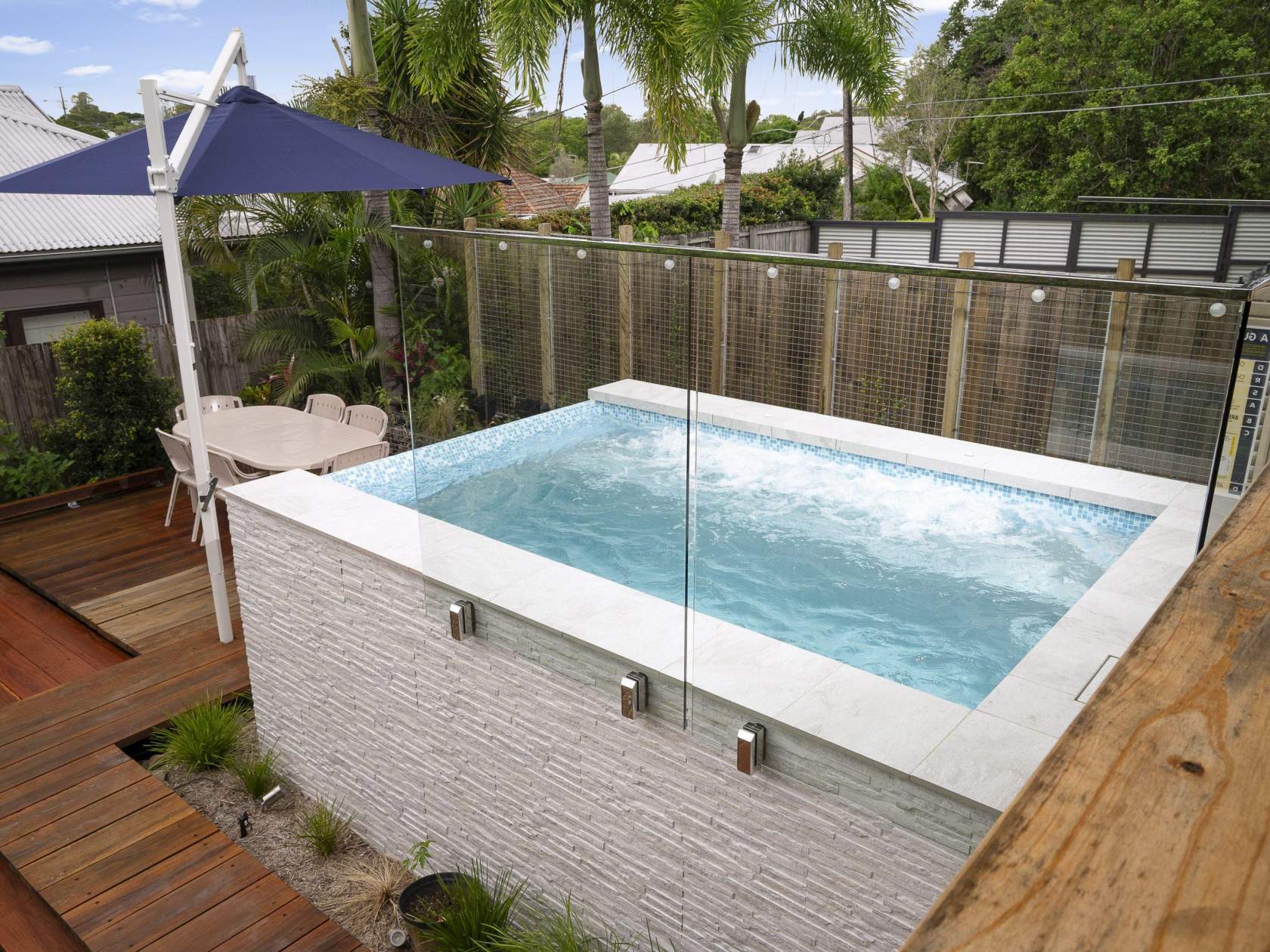

Superb ideas for small outdoor spaces
Design inspiration to deliver the wow factor
Who said big is beautiful? We know good things also come in small packages. It’s easy to create resort style living in even the smallest of spaces with a bit of design inspiration.
A funny thing happens when you spend a bit of extra time at home – something we can all relate to after the last couple of years – you start to notice the little things. You know, the stuff you’ve walked past a thousand times and not given a second thought: a build-up of dust on a rarely used surface, a rug that’s becoming a little threadbare or a finger-marked doorframe that could do with a lick of paint. Online shopping and trips to hardware stores got many of us through the early days of the pandemic.
Lockdowns and stay at home orders may have brought our busy families together, but they also highlighted issues with living and working spaces as everyone strived to find a part of the house to call their own. While the kids may be back at school and mum and dad have likely returned to the workplace, the need to make every part of your home a functional and enjoyable space still stands…and even the smallest of outdoor areas can be made useful with a bit of imagination.
Preparation and planning
First up, take a good hard look at the space in question. Come at it from two directions – try to identify potential uses based on size, shape and proximity to existing functional areas but also think about problems you’d like to solve, or obvious lifestyle shortfalls that need addressing.
For example, installing an outdoor shower at the side of the house near the laundry entrance creates a functional space in an otherwise underutilised area and additionally stops the kids trekking water from the main entry to the bathroom when they get out of the pool – two problems fixed with a relatively low-cost solution.
When identifying potential uses, think about additional requirements these could introduce – will you need access to power and lighting or shelter from the elements?
While we’re focusing here on smaller formats, it’s also worthwhile considering if the current footprint is what you really want in the longer term. There may be potential to increase usable space through rationalisation of the existing elements – reducing the lawn and garden areas in favour of a larger outdoor space for entertaining, for example.
Don’t be bound by today’s layout, as a little creative vision can help bring new and more useful spaces to life in the future.
Start at ground level…
Haphazard furniture placement will give you ‘casual chic’ in some settings, or just look plain untidy in others. Using different floor treatments to section off an area is a simple and very effective way to clearly define a space. Outdoor rugs, feature tiles or pavers, painted concrete, gravel, pebbles or artificial lawn are a few simple options that will sub-divide space into defined zones for dining, reading or just lazing about.
You’ll need to consider a few things – like suitability with the existing flooring, exposure to elements and the expected use of the space. For example, you’ll need specific purpose-developed paint for outdoor concrete areas that will contract expand as required. You’ll also need to apply it to a clean uncoated surface to ensure it adheres.
Some ‘outdoor’ furniture and furnishings – including rugs – may bear the name but won’t necessarily hold up to repeated or long-term sun and rain exposure. Think about furniture placement as well – a dining table may not work well on an uneven surface like gravel.
…and move upwards
Trellises and screens – or even strategically hung curtains and blinds – can be used to effectively divide the space vertically. If you’ve got a little more room, a pergola is always a solid option to delineate one space from the next and allow you and the family to spread out in your own areas to do your own thing.
Make it multipurpose
When space is really at a premium, the best option is simply to make it multipurpose – throw up a hammock, drop in a daybed and include a table for casual dining surrounded by a few potted herbs and flowering plants. Add a water feature or fountain and you’ll be transported to another time and place before you know it.
Depending on the proximity of your outdoor space to the rest of the house, creating a visual link using coordinated furnishings (cushions, rugs, planters etc) or architectural features, will make the space appear larger by seeming connected to the other elements of your home.
Live it up in layers
There’s no law that says everything needs to be on one level. Going up is great way to increase your footprint when outdoor space is at a premium. This can range from simple raised planter boxes at different heights full of statement plants that add some drama, through to fully structured tiered or stepped garden beds with seating and separate areas.
If you’ve got big ideas for your small space, speak with a landscape architect to see what is possible.
Don’t forget the lights
Lighting can be your best friend when it comes to visually extending the range of your garden. Some strategically placed solar fittings will bring the space to life at night by highlighting plants and features and complementing your pool lighting. Don’t forget about objects in the distance – use lighting to pull focus to the furthest point of the garden, creating a sense of increased space. Design is all about tricking the eye – and working with small spaces is no different.
When it comes to getting the most from outdoor spaces, it’s worth reassessing every now and then. What works today won’t necessarily be so effective in five or ten years, but in trying to create beautiful and functional areas out of otherwise wasted space, you’ll ensure that your home delivers years of enjoyment for friends and family.
Even the smallest outdoor area is just a blank canvas, waiting for a little inspiration to bring a new space to life.
